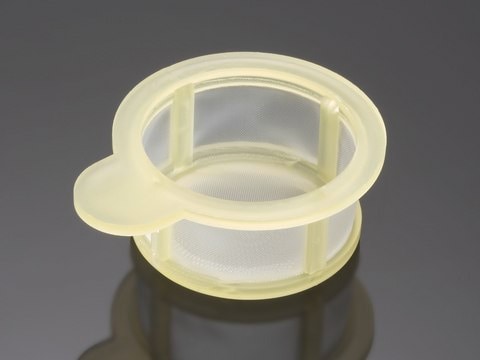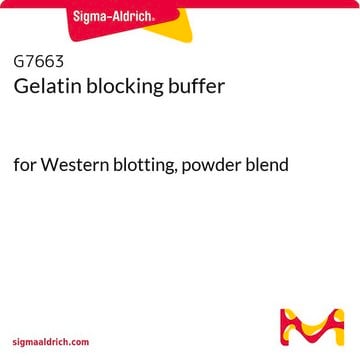2170
ChemiBLOCKER
Synonyme(s) :
Blocking Reagent
About This Item
Produits recommandés
Conditionnement
pkg of 1 L
Fabricant/nom de marque
ChemiBlock
Chemicon®
Technique(s)
ELISA: suitable
immunohistochemistry: suitable
western blot: suitable
Conditions d'expédition
wet ice
Description générale
Related Products:
• BLOT-QuickBlocker A novel blocking protein which produces a semi-clear solution. This allows users the option to examine their blot membranes during the blocking procedure. 200g Catalog Number 2080
• Femto/TBST wash buffer (10X) 250mL Catalog Number 2081
Materials required:
• 1X femto/TBST (Catalog Number 2081), 1X TBST, or 1X PBST
• primary and secondary antibodies
• reagents for immunodetection
Application
ELISA
PROTOCOL:
1. Make up blocking solution by mixing 1 part ChemiBLOCKER with 1 part 1X femto-TBST/PBST (TBST or PBST also work) for blocking PVDF membranes. For nitrocellulose membranes, mix 1 part ChemiBLOCKER with 3 parts 1X femto-TBST (TBST or PBST also work). Note:ChemiBLOCKER can be used at a wide variety of dilutions, some optimization may be necessary. ChemiBLOCKER is NOT recommended for phospho-protein studies as it does contain phosphorylated proteins.
2. Incubate the membrane in blocking solution (10-20 mL) for 60 minutes at room temperature with shaking in a heat-sealable plastic bag.
3. Prepare antibody dilution buffer (ADB). For PVDF membranes mix 1 part ChemiBLOCKER with 3 parts 1X femto-TBST/PBST (TBST or PBST also work). Incubate the membrane in 5-10 mL primary antibody, diluted appropriately with ADB, for 90 min at room temperature with shaking.
4. Wash the membrane 3 times in 50 mL of 1X femto-TBST (TBST or PBST also work) for 5 min each time at room temperature with shaking.
5. Incubate the membrane in 5-10 mL secondary antibody, diluted appropriately with ADB, for 90 min at room temperature with shaking.
6. Wash the membrane as in step #4, but add one extra wash (4 washes total).
7. Wash the membrane 3 times quickly (30 sec.) in 50 mL pure deionized water each time and then process the blot, using femto-LUCENT detection system (or your favorite system).
Conditionnement
Composants
Forme physique
Stockage et stabilité
Informations légales
Mention d'avertissement
Warning
Mentions de danger
Conseils de prudence
Classification des risques
Aquatic Chronic 2 - Eye Irrit. 2 - Skin Irrit. 2 - Skin Sens. 1
Code de la classe de stockage
12 - Non Combustible Liquids
Classe de danger pour l'eau (WGK)
WGK 3
Point d'éclair (°F)
Not applicable
Point d'éclair (°C)
Not applicable
Certificats d'analyse (COA)
Recherchez un Certificats d'analyse (COA) en saisissant le numéro de lot du produit. Les numéros de lot figurent sur l'étiquette du produit après les mots "Lot" ou "Batch".
Déjà en possession de ce produit ?
Retrouvez la documentation relative aux produits que vous avez récemment achetés dans la Bibliothèque de documents.
Notre équipe de scientifiques dispose d'une expérience dans tous les secteurs de la recherche, notamment en sciences de la vie, science des matériaux, synthèse chimique, chromatographie, analyse et dans de nombreux autres domaines..
Contacter notre Service technique









